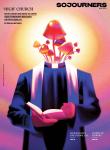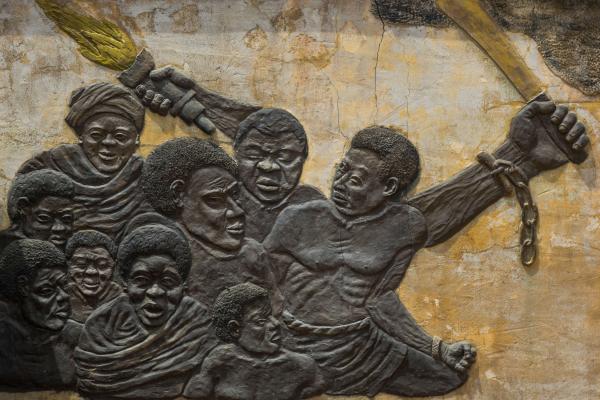For the 49 years that Roe v. Wade protected legal abortion across the country, religious groups, including Catholic bishops and conservative evangelicals, became some of its loudest and best-known opponents. And when the Supreme Court overturned Roe v. Wade in 2022, many Christians claimed it as both a political and spiritual victory.
Yet throughout U.S. history, Christian attitudes on abortion and reproductive rights have never been one-sided. For decades, pastors have provided spiritual accompaniment for people traveling across state lines to receive abortions. Faith-based funds have helped pay for reproductive care, clergy have blessed health clinics, and churches have hosted abortion support groups.
“Throughout history faith leaders, like those who founded the Clergy Consultation on Abortion in 1967, have worked to ensure that people in need of abortion care could access it safely and with dignity,” said Katey Zeh, CEO of the Religious Coalition for Reproductive Choice, in an email. “To honor that legacy in a post-Roe reality, my work is to ask the question, what is most needed now from people of faith in this time of reproductive crisis?”
Regulating sex (and all that comes with it)
Archeologists and historians report that reproduction has beem a highly spiritual and religious concern for most of human history, with different cultures and traditions adopting distinct approaches to sex, family, and procreation. Some ancient religions practiced fertility rites in relatively public settings, connecting human procreation to bountiful crops and other forms of plenty. Other cultures and religions relegated sex to the private domain of the home, which became the more dominant attitude in the West, where Christianity spread.
Historian Leslie J. Reagan’s seminal 1997 book, When Abortion Was A Crime, chronicles changes in belief about ensoulment — the point at which a fetus becomes a sacred life. Prior to the end of the 1800s, she writes, most faiths believed ensoulment was tied to the “quickening” (palpable fetal movement). Before that point, which was subject to the mother’s experience, writes Reagan, no one believed a soul existed, so neither “the popular ethic” nor “common law” prohibited a woman from ending a pregnancy.
In the second half of the 1800s, the American Medical Association sought greater control over obstetrics and gynecology — pushing aside midwives and more traditional birthing practices, Reagan writes. The early regulation effort was in part driven by religious doctors concerned with the morality and safety of abortion. But most regulations didn’t target those receiving abortions, and the religious debate was nuanced. For example, some Christians in the era opposed abortion and contraception on the grounds that they promoted promiscuity, rather than arguing for the sanctity of unborn life. Other clergy, who fought for women’s safety and the wellbeing of living children, may have supported abortion regulations in the name of cracking down on quackery and scammers in medicine. But the limits on contraception and abortion clearly placed a stigma not only on ending pregnancy, but preventing it.
As people of faith clarified their advocacy for abortion access, they also had to clarify other ethical stances, especially about sex, historian Gillian Frank told Sojourners. In his forthcoming book, Making Choice Sacred: Liberal Religion and Reproductive Rights before Roe v Wade, Frank documents how advocacy for abortion was intertwined with questions like: Was sex only for reproduction? Could sex be part of bonding within marriage? Was sexual pleasure sacred in and of itself?
In the 1920s and ’30s, Christian clergy vigorously debated contraception and the “religious right to plan families,” Frank said. More clergy began talking about the benefits of non-generative sex within marriage, which some Protestant clergy used as a justification for contraception. In 1931, 22 of the 28 members of a committee of the Federal Council of Churches of Christ in America voted to support birth control for married couples. News of the statement ran on the front page of the New York Times.
Growing religious support for abortion
In 1961, the National Council of Churches, which at the time represented 39 million Christians in 25 major Protestant groups and eight Eastern Orthodox groups, adopted a statement condemning “abortion or any method which destroys human life except when the health or life of the mother is at stake.” The statement offered caution on permanent sterilization, but permitted family planning “provided the methods are limited to the prevention of conception.”
Yet throughout the ’60s, some Christian denominations, including the United Church of Christ, American Baptist Convention, the United Methodist Church, the United Presbyterian Church in the U.S.A, and the Lutheran Church in America, began to issue statements in support of legal abortion, sociologist Sabrina Danielsen found.
“Because Christ calls us to affirm the freedom of persons and the sanctity of life, we recognize that abortion should be a matter of responsible personal decision,” the 1968 American Baptist resolution reads.
In 1971, The Southern Baptist Convention issued a resolution “to work for legislation that will allow the possibility of abortion under such conditions as rape, incest, clear evidence of severe fetal deformity, and carefully ascertained evidence of the likelihood of damage to the emotional, mental, and physical health of the mother.” The SBC reaffirmed this resolution three years later.
Around that time, the Clergy Consultation Service was active in 25 states. Clergy support came from a wide range of denominations, including the Presbyterian Church (U.S.A.), United Methodist, Episcopal, Reform Judaism, Unitarian Universalist, and others. When the service began in 1967, abortion was illegal in all states. The service would help young women in need of abortions connect to safe, reputable clinics, usually involving some amount of travel. They offered counsel and spiritual support as well. As abortion became legal state-by-state, the CCS was able to guide women to legal clinics in states like New York.
According to Barbara Gerlach, who joined the interfaith group in 1971, the involvement of clergy allowed the women a safe place to make difficult decisions grounded in their ethics and values.
Gerlach estimates that she counseled around 30 women during her time with the service, including teens, young women in abusive marriages, and older moms. Whatever their circumstances, the women who came to her were reflective and earnest. And often, Gerlach said, the women needd space to grieve, even though they knew they were doing what needed to be done. “I always felt like I was on holy ground,” she said.
When the Supreme Court issued its 1973 ruling on Roe v. Wade, Christian denominations were varied in their response to the decision. Some, including the Southern Baptists, welcomed the decision. Catholics stood “nearly alone” in their call to overturn the decision, though the Church of Jesus Christ of Latter-day Saints also maintained opposition to abortion, according to historian Neil J. Young. Other conservative Protestants may have had similar stances on abortion itself, but few mobilized alongside the Catholics until later, with the National Right to Life Committee and the Moral Majority.
Religious mobilization against abortion
By the late ’70s, some Christians — especially white evangelicals — started to change their mind about abortion. Some historians, like Randall Balmer, argue that the Religious Right first organized to defend racial segregation and only later began to rally around ending abortion. As this new movement gained power, it opposed abortion access, advocated for regulating clinics, and fought public funding for abortion care.
According to Frank, two concurrent shifts took place throughout the 1980s and 1990s that led to the polarized — and often over-simplified — discourse that religion and abortion are universally in opposition. First, the loud, mobilized Religious Right captured the attention of the mainstream press. This was partially because, with Roe in place, opposition to abortion the movement pushing for change to the status quo. The Moral Majority was increasing its influence in Washington, D.C., and the press documented the major players in the Reagan, George H.W. Bush, Clinton, and George W. Bush presidencies. However, Frank said, the press was reticent to report on nuanced religious positions — an observation backed by current research. For decades, there was little publicity around religious support for abortion, largely erasing this position from public view. Only one voice represented religion in the public eye.
With the law on their side, many religious supporters of reproductive justice focused their efforts on spiritual support, not political action. Throughout the ‘90s, 2000s, and 2010s, the Clergy Consultation Service evolved into the Religious Coalition for Reproductive Choice, which like many other pro-choice faith groups, focused on providing spiritual support and affirmation through clinic blessings, compassionate care training, and online resources. Pro-choice faith groups prioritized communicating to abortion-seekers that their reproductive experience was not anathema to faith. Most groups focused on ending abortion stigma, and a handful offered practical support in places where conservatives were challenging access.
When the Supreme Court overturned Roe in 2022, some religious and non-religious nonprofits, including churches, were forced to change the nature of their support. In Texas, for instance, it became illegal for churches to offer financial support for someone seeking an abortion. Abortion funds had to cease operations. Some wondered if an underground verion of the Clergy Consultation Service would be reborn — a question that remains open as the legal landscape is still changing.
Those working for reproductive justice today are glad to see people of faith become more visible in the movement.
In Texas, Rev. Daniel Kanter, Rev. Erika Forbes, and a multi-faith chaplaincy team in Dallas are navigating the state-by-state challenges of legality and availability, helping abortion-seekers connect to safe, vetted clinics where abortion is legal.
In Kentucky, Indiana, Missouri, and other states, clergy and people of various faiths have filed lawsuits claiming that abortion bans are based on an inherently religious idea of sanctity of life, and thus violate their religious freedom to seek and support abortions. Education and advocacy organization Faith Choice Ohio started the Jubilee Fund, the state’s first faith-based abortion fund.
Elaina Ramsey, executive director of Faith Choice Ohio, believes that, going forward, the movement for reproductive justice has to be based in faith. Because for many people, she said, that is where beliefs about sex, reproduction, and bodily autonomy are forged.
“We need religious strategies and solutions to what is a deeply religious problem for some people,” she said. “As long as we only seek political strategies, we’re never going to meet people where they’re at.”
Got something to say about what you're reading? We value your feedback!








